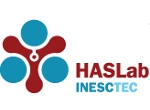Since the dawn of times, curiosity and necessity to improve the quality of their life, led humans to find means to understand everything surrounding them, aiming at improving it. Whereas the creating abilities of some was growing, the capacity to comprehend of others follow their steps. Disassembling physical objects to comprehend the connections between the pieces in order to understand how they work together is a common human behavior. With the computers arrival, humans felt the necessity of applying the same techniques (disassemble to comprehend) to their programs.
Traditionally, these programs are written resorting to general-purpose programming languages. Hence, techniques and artifacts, used to aid on program comprehension, were built to facilitate the work of software programmers on maintaining and improving programs that were developed by others. Generally, these generic languages deal with concepts at a level that the human brain can hardly understand.
So understanding programs written in this languages is an hard task, because the distance between the concepts at the program level and the concepts at the problem level is too big.
Thus, as in politics, justice, medicine, etc. groups of words are regularly used facilitating the comprehension between people, also in programming, languages that address a specific domain were created. These programming languages raise the abstraction of the program domain, shortening the gap to the concepts of the problem domain.
Tools and techniques for program comprehension commonly address the program domain and they took little advantage of the problem domain. In this master’s thesis, the hypothesis that it is easier to comprehend a program when the underlying problem and program domains are known and a bridge between them is established, is assumed. Then, a program comprehension technique for domain specific languages,
is conceived, proposed and discussed. The main objective is to take advantage from the large knowledge about the problem domain inherent to the domain specific language, and to improve traditional program comprehension tools that only dealt, until then, with the program domain. This will create connections between both program and problem domains. The final result will show, visually, what happens internally
at the program domain level, synchronized with what happens externally, at problem level.

